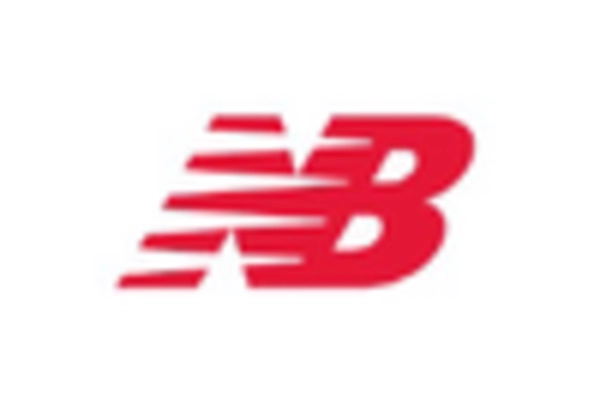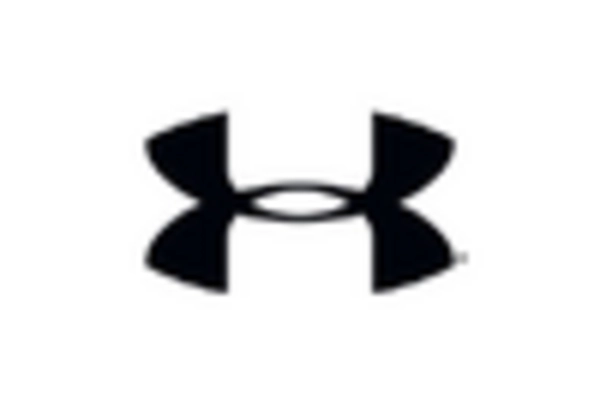The sneakers market in the US exhibits a dynamic competitive landscape characterized by rapid innovation and evolving consumer preferences. Key players such as Nike (US), Adidas (DE), and New Balance (US) are at the forefront, each employing distinct strategies to capture market share. Nike (US) continues to emphasize digital transformation, leveraging advanced data analytics to enhance customer engagement and streamline operations. Adidas (DE), on the other hand, focuses on sustainability, integrating eco-friendly materials into its product lines, which resonates with environmentally conscious consumers. New Balance (US) is carving a niche through localized manufacturing, appealing to consumers' desire for authenticity and quality. Collectively, these strategies contribute to a competitive environment that is increasingly defined by innovation and consumer-centric approaches.
In terms of business tactics, companies are increasingly localizing manufacturing to mitigate supply chain disruptions and enhance responsiveness to market demands. This trend is particularly evident in the moderately fragmented structure of the market, where smaller brands also play a crucial role in driving innovation. The collective influence of major players, however, remains significant, as they set trends that smaller brands often follow, thereby shaping the overall market dynamics.
In October 2025, Nike (US) announced a partnership with a leading tech firm to develop a new line of smart sneakers that integrate AI technology for personalized fitness tracking. This strategic move not only positions Nike (US) as a pioneer in the intersection of technology and footwear but also aligns with the growing consumer demand for smart products that enhance athletic performance. The collaboration is expected to bolster Nike's market presence and attract tech-savvy consumers.
In September 2025, Adidas (DE) launched its "End Plastic Waste" initiative, unveiling a new sneaker line made entirely from recycled ocean plastics. This initiative underscores Adidas's commitment to sustainability and reflects a broader industry trend towards environmentally responsible practices. By addressing the pressing issue of plastic pollution, Adidas (DE) not only enhances its brand image but also appeals to a growing demographic of eco-conscious consumers, potentially increasing its market share.
In August 2025, New Balance (US) expanded its manufacturing capabilities in the US by investing $50 million in a new facility in Massachusetts. This investment is strategically significant as it allows New Balance (US) to increase production capacity while reinforcing its commitment to American-made products. The move is likely to resonate with consumers who prioritize domestic manufacturing, thereby strengthening brand loyalty and market position.
As of November 2025, the sneakers market is increasingly influenced by trends such as digitalization, sustainability, and the integration of AI technologies. Strategic alliances are becoming more prevalent, as companies seek to leverage each other's strengths to enhance product offerings and market reach. Looking ahead, competitive differentiation is expected to evolve, with a notable shift from price-based competition towards innovation, technological advancements, and supply chain reliability. This transition suggests that companies that prioritize these areas will likely emerge as leaders in the market.

















Leave a Comment